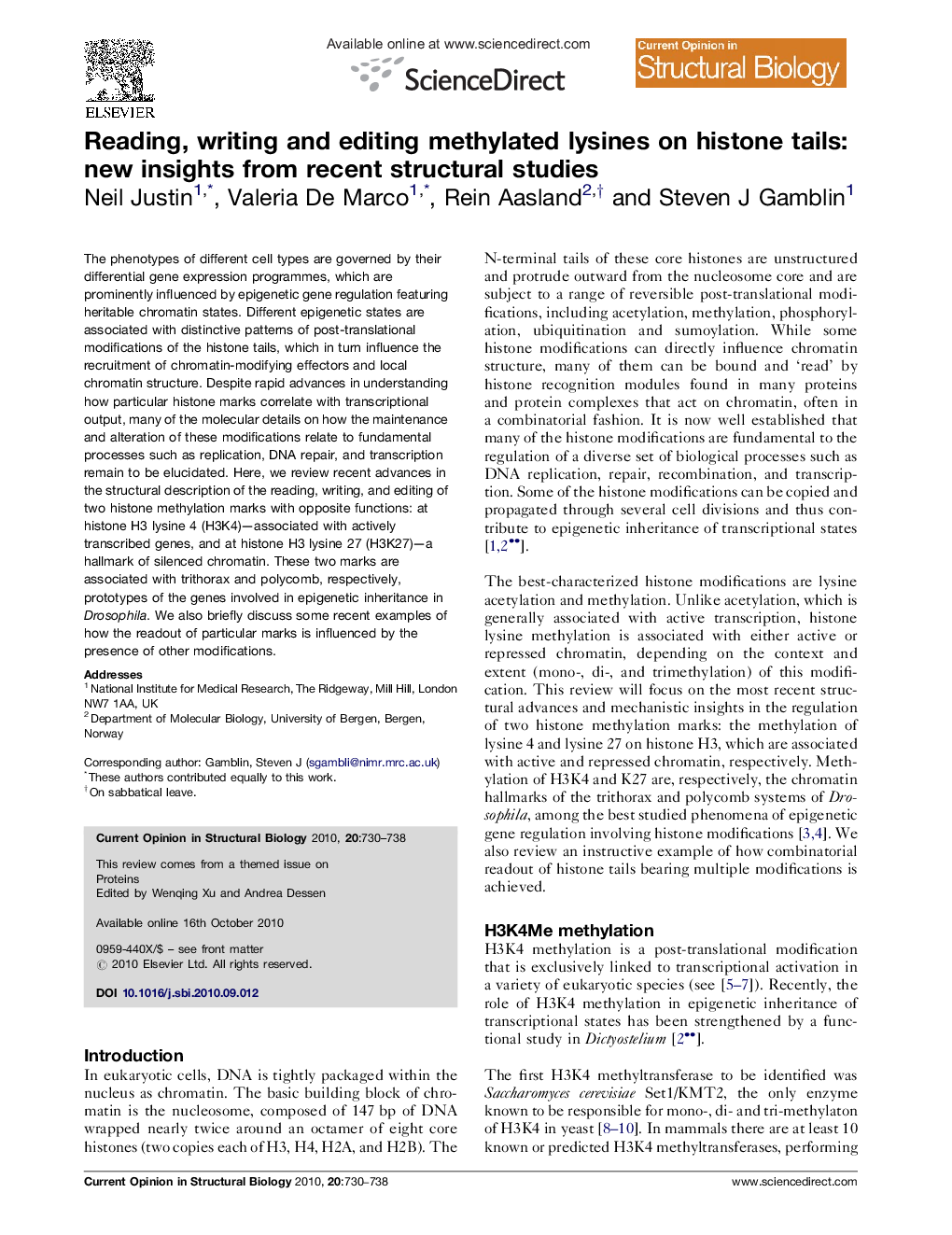| Article ID | Journal | Published Year | Pages | File Type |
|---|---|---|---|---|
| 8320288 | Current Opinion in Structural Biology | 2010 | 9 Pages |
Abstract
The phenotypes of different cell types are governed by their differential gene expression programmes, which are prominently influenced by epigenetic gene regulation featuring heritable chromatin states. Different epigenetic states are associated with distinctive patterns of post-translational modifications of the histone tails, which in turn influence the recruitment of chromatin-modifying effectors and local chromatin structure. Despite rapid advances in understanding how particular histone marks correlate with transcriptional output, many of the molecular details on how the maintenance and alteration of these modifications relate to fundamental processes such as replication, DNA repair, and transcription remain to be elucidated. Here, we review recent advances in the structural description of the reading, writing, and editing of two histone methylation marks with opposite functions: at histone H3 lysine 4 (H3K4)-associated with actively transcribed genes, and at histone H3 lysine 27 (H3K27)-a hallmark of silenced chromatin. These two marks are associated with trithorax and polycomb, respectively, prototypes of the genes involved in epigenetic inheritance in Drosophila. We also briefly discuss some recent examples of how the readout of particular marks is influenced by the presence of other modifications.
Related Topics
Life Sciences
Biochemistry, Genetics and Molecular Biology
Biochemistry
Authors
Neil Justin, Valeria De Marco, Rein Aasland, Steven J Gamblin,
